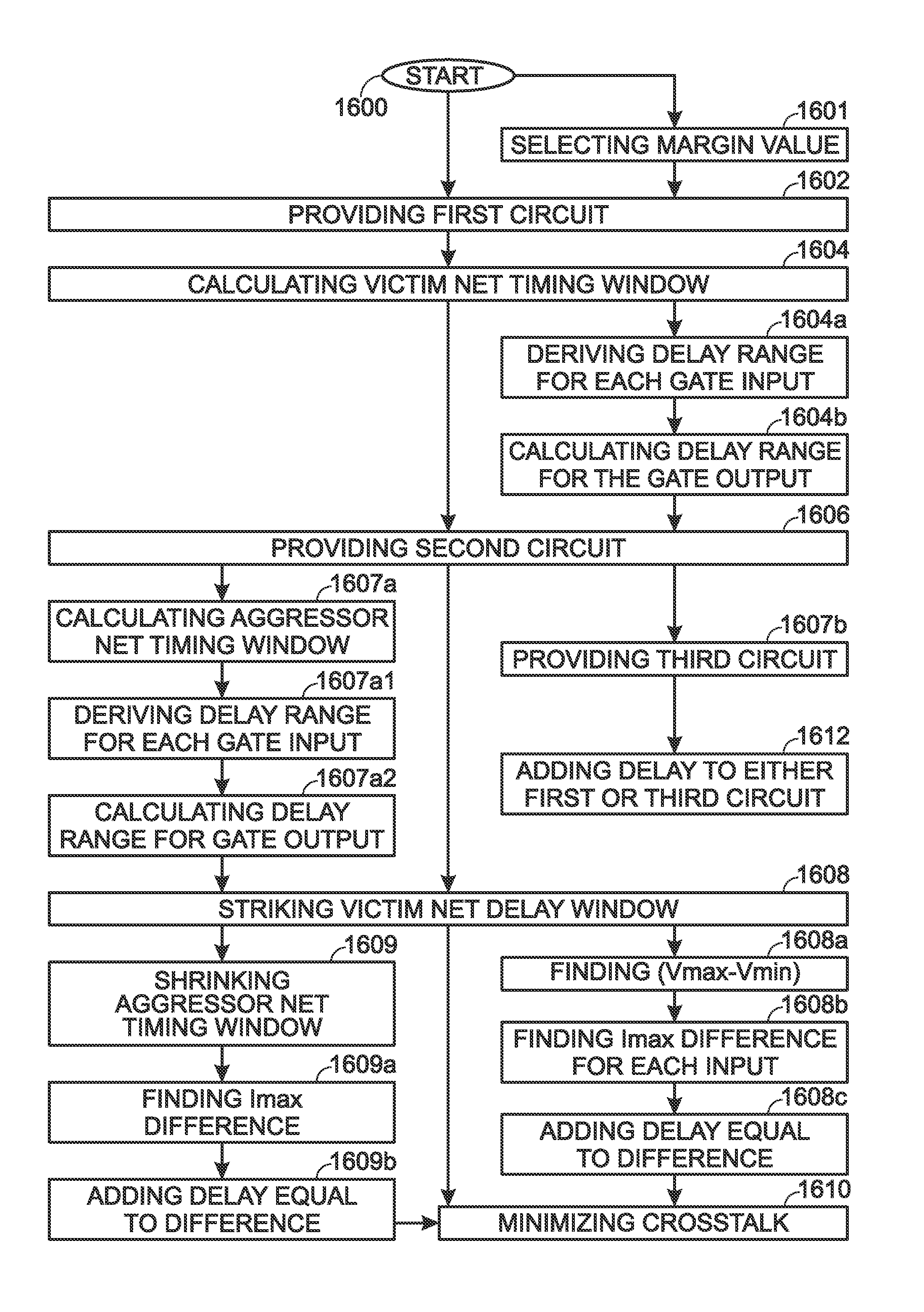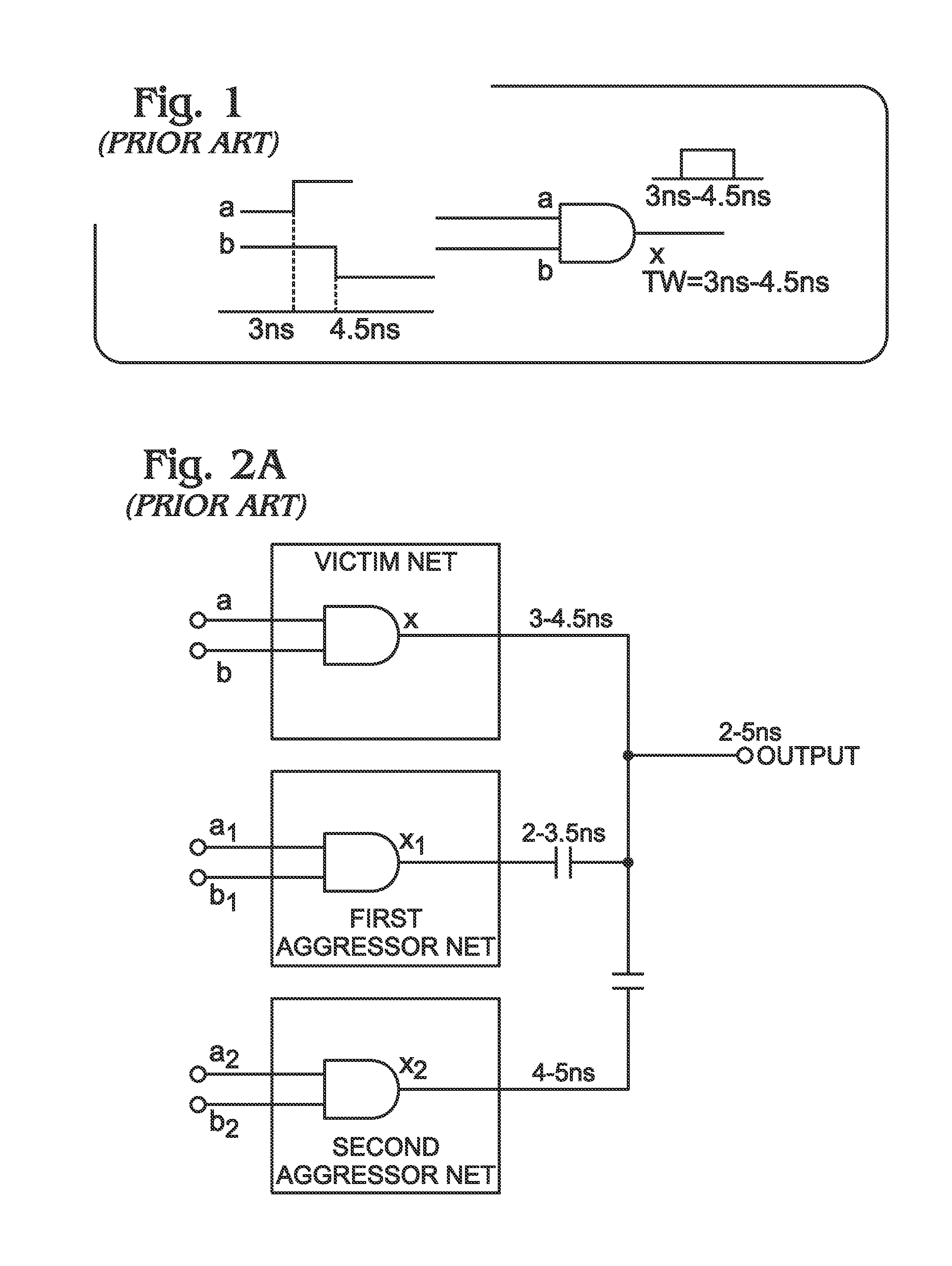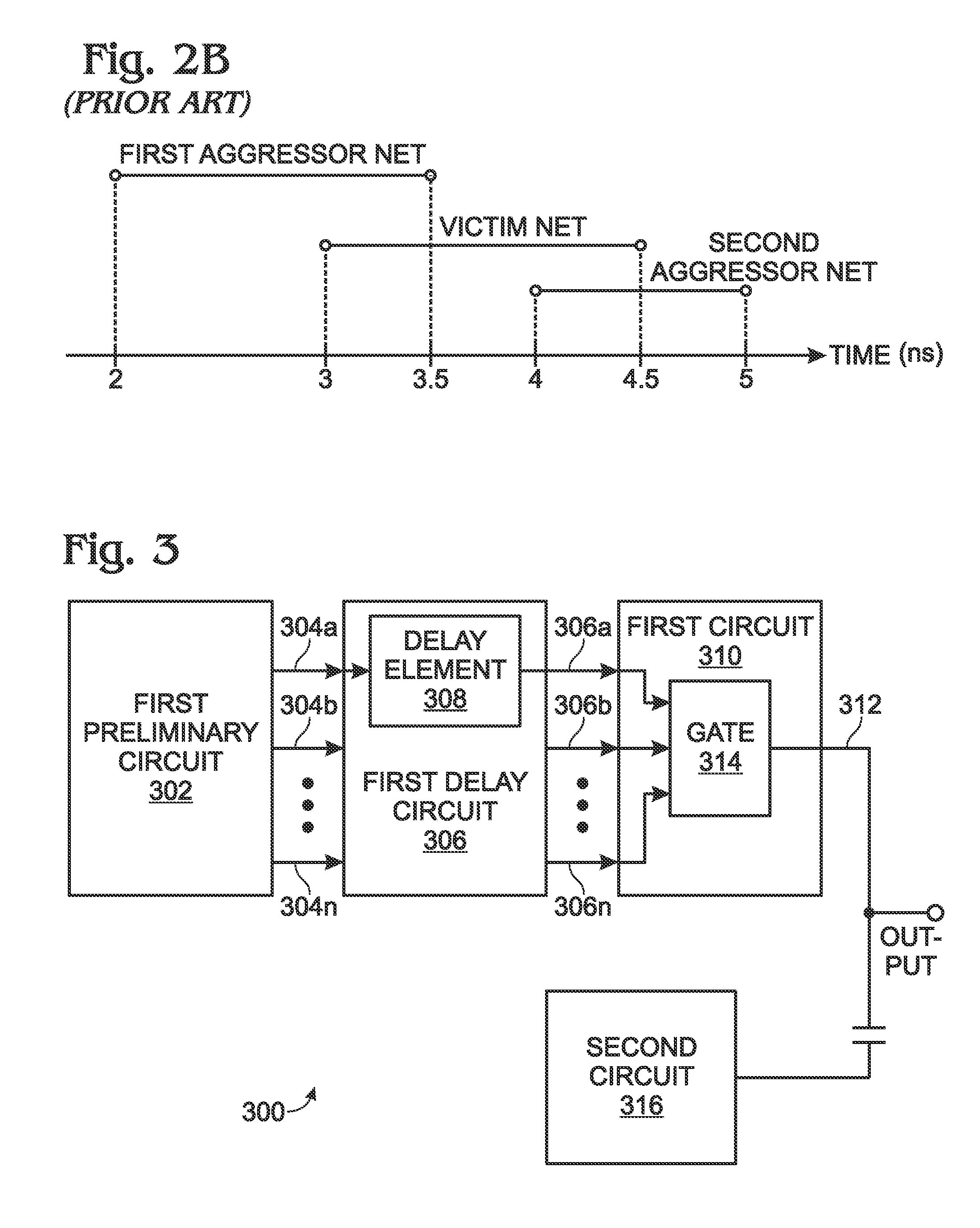Victim net crosstalk reduction
a net and victim technology, applied in the field of signal networking, can solve the problems of large increased complexity of interconnect systems for such ics, and reduced geometries, so as to avoid analysis iterations and reduce the effect of crosstalk noise of coupled nets
- Summary
- Abstract
- Description
- Claims
- Application Information
AI Technical Summary
Benefits of technology
Problems solved by technology
Method used
Image
Examples
Embodiment Construction
[0038]FIG. 3 is a schematic block diagram of a system of hardware devices connected with minimal signal crosstalk. The system 300 comprises a first preliminary circuit 302 having a first plurality of outputs 304 whose combination results in a preliminary net delay range (P) with a minimum delay (Pmin) and a maximum delay (Pmax), where (d1+P) at least partially overlaps aggressor net delay range (A1). Shown are outputs 304a through 304n, where n is a variable not limited to any particular value. A first delay circuit 306 has a first plurality of inputs 304 connected to the first preliminary circuit outputs, a first plurality of outputs 306 (306a through 306n). The first delay circuit 306 includes at least one delay element 308 with a delay (d) interposed between the first preliminary circuit minimum delay output (e.g., 304a) and the first delay circuit output 306a, resulting in a first shrunken net delay range with a minimum delay (Dmin) and a maximum delay (Dmax), where Dmin=d+Pmin,...
PUM
 Login to View More
Login to View More Abstract
Description
Claims
Application Information
 Login to View More
Login to View More - R&D
- Intellectual Property
- Life Sciences
- Materials
- Tech Scout
- Unparalleled Data Quality
- Higher Quality Content
- 60% Fewer Hallucinations
Browse by: Latest US Patents, China's latest patents, Technical Efficacy Thesaurus, Application Domain, Technology Topic, Popular Technical Reports.
© 2025 PatSnap. All rights reserved.Legal|Privacy policy|Modern Slavery Act Transparency Statement|Sitemap|About US| Contact US: help@patsnap.com



